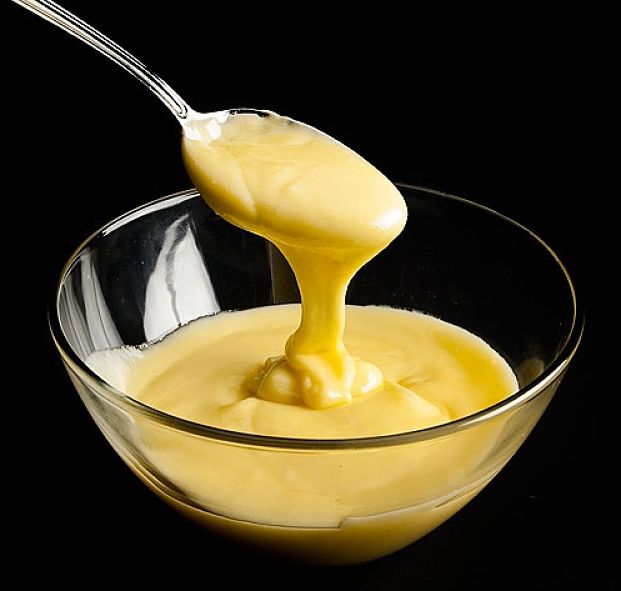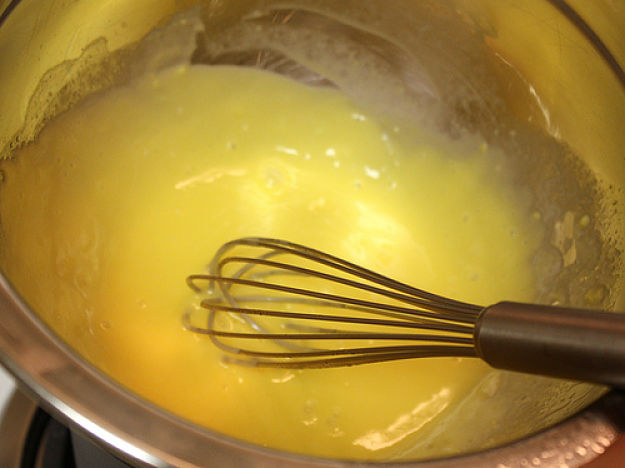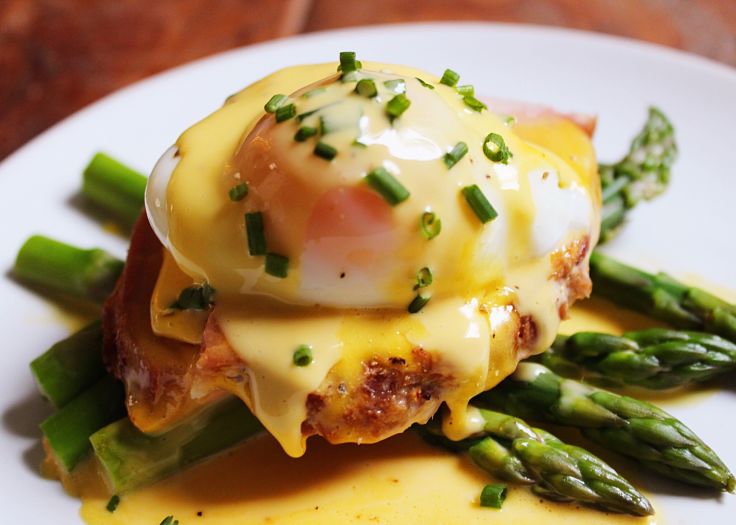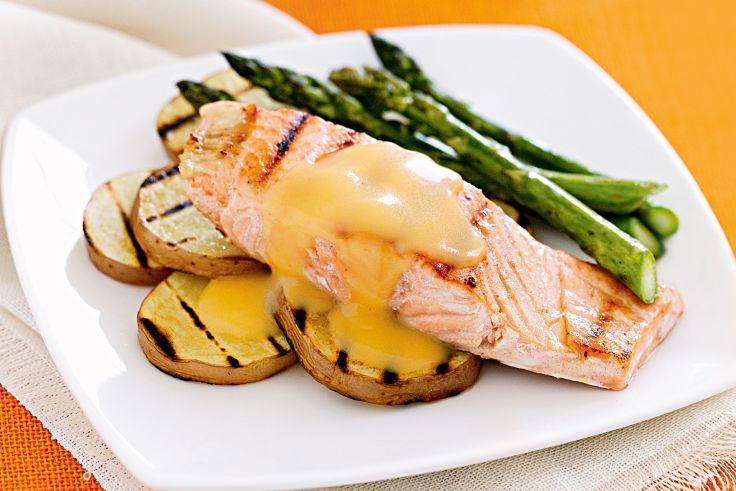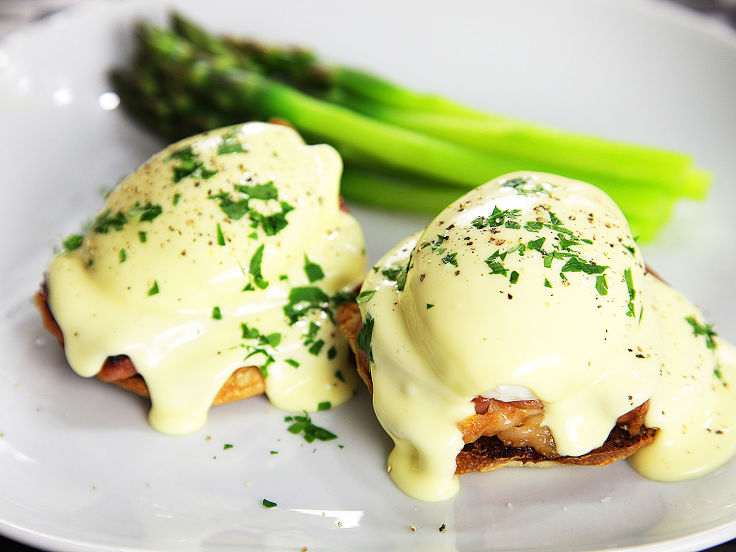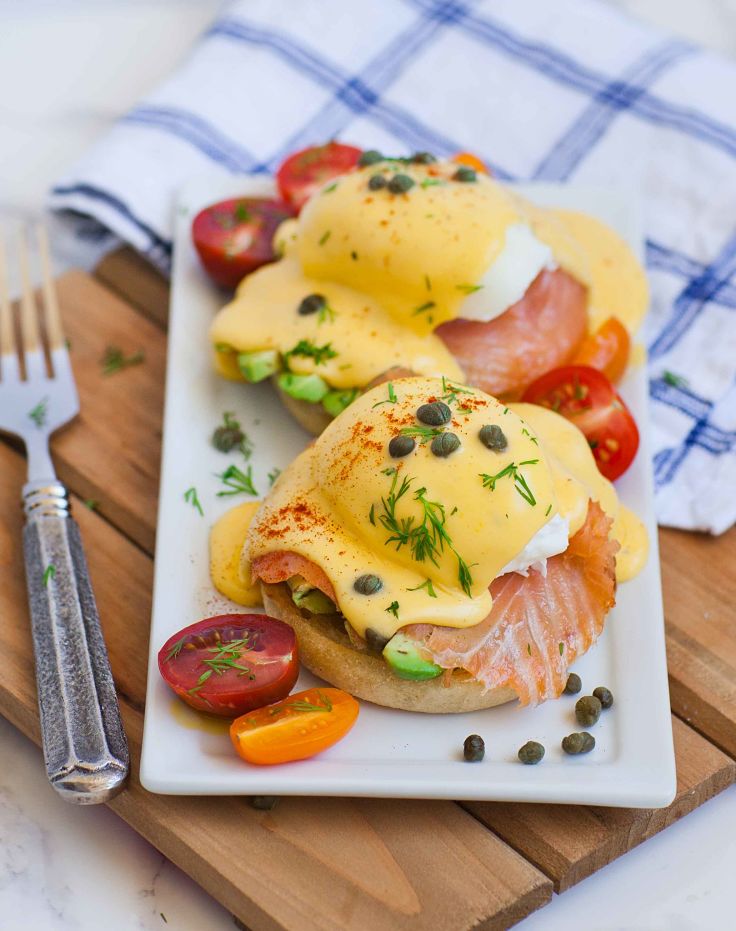How to Make Hollandaise Sauce - Simple Easy Recipes, Tips, Variations
Hollandaise sauce is made using butter and egg yolks as binding and the term Hollandaise means Holland-style or from Holland.
This beautiful pale lemon colour sauce is opaque with buttery-smooth texture, somewhat frothy and is served hot with fish, asparagus, vegetables and eggs (for the famous egg benedict).
The flavor is rich and buttery, with a mild tang added by the lemon juice. Making this emulsified sauce at home requires care, attention to detail and some practice. But perseverance will be rewarded by a versatile sauce that complements many dishes. Homemade sauces are a delight and certainly worth the effort. Most food historians believe that the 'Sauce Hollandaise' recipe was developed in the Normandy Region, always famous for its butter and butter-based cooking. It was probably first named 'Sauce Isigny', after the Normandy town of Isigny.
A recipe using egg yolks to bind the sauce with good quality fresh butter, salt, a little vinegar and nutmeg, and one or two egg yolks to bind the sauce. The recipe mentions the need to be careful that the sauce doesn't curdle (nothing has changed, has it!). The recipe appeared in 'Le cuisine françois' (The True French Cook) in 1651. Recipes for Sauce Hollandaise (or 'Dutch Sauce') were popular in 19th century American Cookbooks.
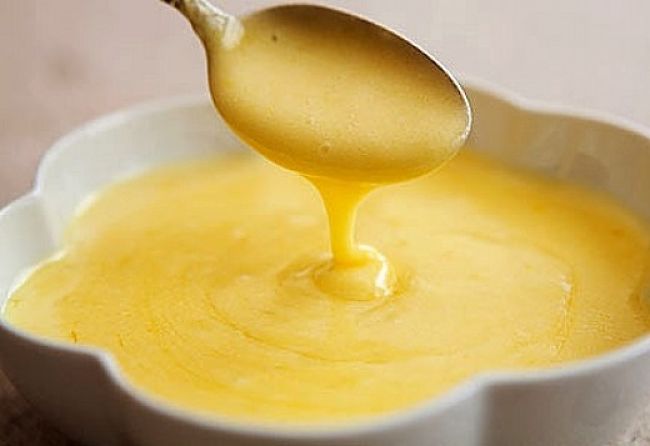
Hollandaise Sauce Recipe
- 2 egg yolks
- 7oz (200 g) salted butter
- 1/2 teaspoon fine grated lemon zest
- 2 tablespoons white wine vinegar
- 2 tablespoons lemon juice
Method
- Melt the butter and leave for about five minutes. This is important so that the milk solids can sink to the bottom. This allows the consistency of the sauce to be controlled as the liquid is added first and then the solids, mot all of which may be required.
- Take a large saucepan, and fill about a third full and put on to boil. Take a stainless steel mixing bowl that fits into the saucepan, but does not touch the surface of the water.
- Add the lemon juice, egg yolks, zest and vinegar to the mixing bowl.
- Turn the heat down so that the water just comes off the boil. This temperature is critical so that the yolks don't begin to curdle.
- Place the mixing bowl over the pan of water and start to gently mix in the bowl using a whisk. As the mixture heats it will slowly start to increase in volume. The aim of the whisking is not so much to aerate the mixture but to stop the yolks catching on the bottom and to ensuring an even thickening as it heats. The yolk mixture thickens more around the edges of the bowl and on the bottom. Place a rolled towel around the outside of the bowl so that you can take it off the heat if it starts to form lumps from heating to fast.
- It is a bit like making a white sauce which also thickens from the bottom and will form lumps if not constantly mixed. So keep the yolk mixture moving continuously by whisking. The bubbles in the mixture caused by the whisking will reduce in size the liquid yolk cooks.
- If the mixture begins to catch on the bottom and starts to form lumps, use the towel to lift the bowl above the pot to decrease the heating.
- After about five to ten minutes, the yolk mixture will have thickened to resemble soft whipped cream. The texture should be smooth with no lumps. This means the yolks are cooked but have not become scrabbled eggs. Remove the bowl from the pan of water and place it on a warm damp cloth to stop it moving when mixing.
- The next stage is to whisk the butter into the mixture. Make sure that the butter has been melted previously and allowed to cool for 5 minutes. Start whisking the mixture quickly and continuously and slowly pour in the butter in a very thin steady stream. Be careful to add the butter very slowly otherwise the mixture will separate and split into layers.
- At first, the whisking will be relatively easy but becomes more critical as the butter is slowly blended into the sauce. Add the butter slower and slower, at this stage to compensate. Add the milk solids from the melted butter slowly and carefully. Stop if the sauce appears to be getting too thin. It is at this stage that hollandaise sauce is most likely to split, so you need to be watchful and careful and add the butter very slowly. Usually adding all the milk solids from the butter will provide the right consistency. But if the sauce is too thick after adding all the solids you can thin it by adding little boiling water.
- Adjust the seasoning and transfer to a small stainless steel bowl, cover and keep in a warm place until ready to serve. The sauce can be prepared up to two hours before is used.
- If you find that the sauce splits because the butter has been added too quickly, use a blender to re-mix the emulsion and save it. A split sauce is the most feared outcome when preparing this sauce.
- The process is complicated but it becomes easier after a few tries
Variations for Hollandaise Sauce
Lime Hollandaise
Replace the lemon juice and lemon zest with lime juice and zest. Lime hollandaise is wonderful with fish or seafood
Basil Hollandaise
Add some finely chopped fresh basil leaves to the finished hollandaise sauce. This goes well with asparagus and other vegetables.
Béarnaise sauce
Replace the lemon juice and zest with strong tarragon vinegar. Add chopped chervil, fresh tarragon and parsley and freshly milled black pepper to the completed sauce. This sauce is ideal for red meat dishes.
Quick and Easy Blender-Made Hollandaise Sauce Recipe
This quick and easy version works if you are in a hurry. Made in a blender.
Ingredients
- 1/2 teaspoon salt
- 10 tablespoons butter
- 1 tablespoon lemon juice
- 3 egg yolks (free range eggs)
- 1/8 teaspoon cayenne pepper (optional)
Method
Place the butter in a small pot or frying pan and melt over low heat, until just before it starts to bubble. Place the lemon juice, salt, egg yolks in your blender bowl and sprinkle with the cayenne pepper. Pulse the egg mixture using a medium setting until the mixture lightens in color (generally 20-30 seconds). The blending action injects air into the mixture and warms the eggs a little. Reduce the blender speed to the lowest setting. Slowly add the hot melted butter in a drizzle while the blender is going. Continue to blend the mixture after all the butter has been added and incorporated. Adjust the taste by adding more salt and lemon juice if required.
Related Articles on Sauces and Great Sauce Recipes
=> 10 Easy Butter Sauce Recipes and Cooking Tips
=> 14 Best Nut Sauce Recipes: Peanut, Almond, Pecan, Macadamia, Walnut, Cashew
=> Best Chermoula Sauce and Marinade Recipes for Fish, Seafood, Chicken and Meat
=> Beurre Blanc Sauce Recipes with Lemon, Dill, other Herbs for Seafood
=> Collection of Best Sauce Recipes for Fish Fillets
=> Homemade Horseradish Sauce Recipes, Other Uses for Fresh Horseradish
=> How to Make Lemon Curd, Recipe for Lemon Butter Sauce for Fish Sauce
=> Lemon Sauce Recipes - Sweet, Savory, Sour, Spicy, Tangy
=> Spanish Romesco Sauce and Romescada Fish Stew Recipes
=> How to Make Garlic Sauces, Aioli, Toum - Best Sauce Recipes, Tips, Variations
